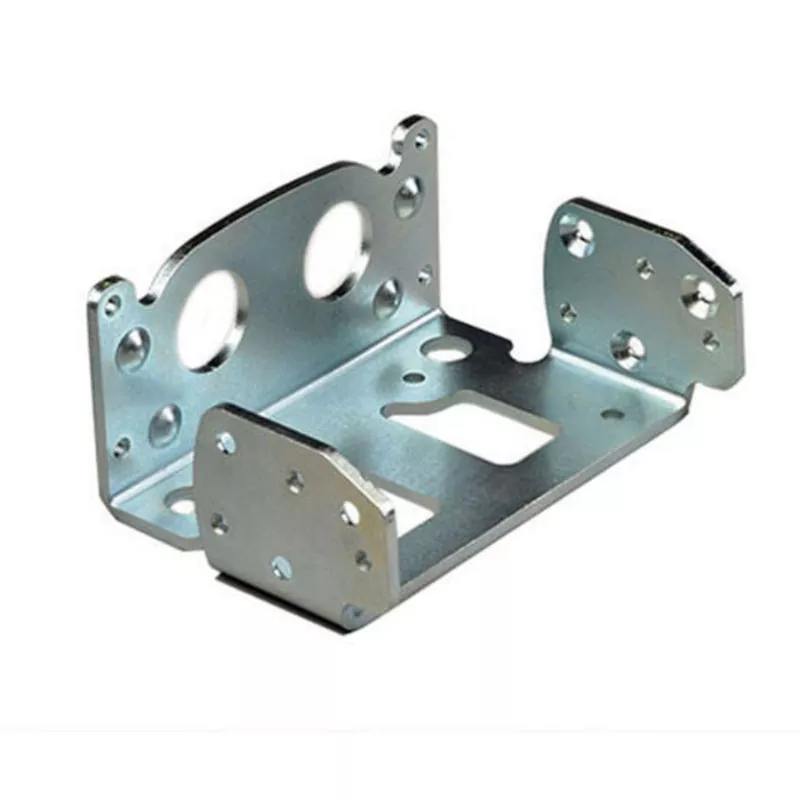Why Are Auto Stamping Parts Critical to Modern Vehicle Manufacturing?
2024-11-28
In the automotive industry, precision, efficiency, and durability are key to producing vehicles that meet the highest standards. Auto stamping parts play a pivotal role in achieving these goals. But what exactly are auto stamping parts, and why are they so crucial in the manufacturing process? Let’s explore their significance and impact.
1. What Are Auto Stamping Parts?
Auto stamping parts are components created through the stamping process, which involves shaping flat metal sheets into specific forms using high-pressure machinery and dies. These parts are essential in the construction of a vehicle’s body, structural framework, and other functional elements.
From small brackets to large panels, stamping produces a wide variety of parts that ensure a car's integrity, performance, and aesthetic appeal.
2. Why Is Stamping Essential in Automotive Manufacturing?
Stamping is a cornerstone of vehicle production for several reasons:
- Precision: The stamping process ensures that parts are crafted to exact dimensions, meeting the tight tolerances required in automotive design.
- Efficiency: High-speed stamping equipment allows for mass production, meeting the demands of the global automotive market.
- Cost-Effectiveness: By minimizing material waste and streamlining production, stamping reduces overall manufacturing costs.
3. What Types of Auto Stamping Parts Are Commonly Produced?
The diversity of auto stamping parts reflects their versatility in vehicle design. Common examples include:
- Body Panels: Doors, hoods, fenders, and roofs are shaped using stamping techniques for a seamless fit and finish.
- Chassis Components: Frames and structural reinforcements provide the strength and stability needed for safety and performance.
- Interior Parts: Stamping creates brackets, mounts, and other elements that support vehicle interiors.
- Engine and Transmission Parts: Certain stamped components are integral to the operation of powertrains.
4. How Does Stamping Technology Enhance Auto Manufacturing?
Modern advancements in stamping technology have revolutionized the production of auto parts. Key innovations include:
- High-Strength Material Stamping: Advanced machines can shape ultra-high-strength steels and lightweight alloys, supporting the trend toward lighter, more fuel-efficient vehicles.
- Progressive Stamping: This technique combines multiple operations in a single tool, reducing production time and enhancing efficiency.
- Custom Tooling: Precision dies and molds allow for the creation of highly detailed and complex parts.
5. What Are the Benefits of Auto Stamping Parts?
Auto stamping parts offer several advantages that make them indispensable:
- Consistency: The automated nature of stamping ensures uniformity across large production runs.
- Durability: Stamped parts are strong and resistant to wear, contributing to a vehicle's longevity.
- Versatility: Stamping can accommodate a range of materials, including steel, aluminum, and other alloys, depending on the application.
- Design Flexibility: Complex geometries and intricate details are achievable with modern stamping techniques.
6. What Industries Beyond Automotive Use Stamping Parts?
While primarily associated with vehicles, stamping is also widely used in other sectors:
- Aerospace: For creating lightweight yet strong components.
- Consumer Electronics: To manufacture precision parts for devices.
- Construction: For structural and decorative elements in buildings.
7. What Challenges Do Auto Stamping Parts Address in Vehicle Design?
Automotive manufacturers face the challenge of balancing cost, weight, and performance. Stamping parts help overcome these hurdles by:
- Reducing Vehicle Weight: Lightweight materials shaped through stamping improve fuel efficiency without compromising safety.
- Enhancing Aerodynamics: Precisely crafted body panels contribute to smoother airflow.
- Lowering Costs: The high efficiency of stamping reduces material waste and labor expenses.
8. Is Stamping the Future of Auto Manufacturing?
With ongoing advancements in materials and machinery, stamping is poised to remain at the forefront of automotive production. Technologies like automated die changes, AI-driven quality control, and sustainable materials are set to further enhance the efficiency and eco-friendliness of the process.
9. Conclusion
Auto stamping parts are more than just components—they are the backbone of modern vehicle manufacturing. Their precision, efficiency, and adaptability make them indispensable in producing safe, stylish, and high-performing vehicles.
So, the next time you see a car on the road, remember that its sleek design and robust construction owe much to the humble yet powerful stamping process. How might auto stamping parts shape the future of the vehicles we drive? The possibilities are endless.



